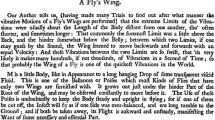Abstract
Arguments are presented for doubting whether the effect of AMPPNP on insect flight muscle in rigor signals a reversion of the power stroke of attached cross-bridges. Instead, the effect of this nucleotide on insect and other muscles may be better explained in terms of the behavior of detached bridges. Knowledge of events in the detached half of the contractile cycle may nevertheless be relevant to understanding the mechanism of energy transduction.
Access this chapter
Tax calculation will be finalised at checkout
Purchases are for personal use only
Preview
Unable to display preview. Download preview PDF.
Similar content being viewed by others
References
Goody, R.S., Holmes, K.C., Mannherz, H.G., Barrington-Leigh, J. & Rosenbaum, G. (1975). X-ray studies of insect flight muscle with ATP analogues. Biophys. J. 15: 687–705.
Harrington, W.F. (1979). On the origin of the contractile force in skeletal muscle. Proc. Natl. Acad. Sci. USA. 76: 5066–5070.
Haselgrove, J.C. (1975). X-ray evidence for conformational changes in the myosin filaments of vertebrate striated muscle. J. Mol. Biol. 92: 113–143.
Huxley, H.E. (1983). This volume.
Kuhn, H.J. (1981). The mechanochemistry of force production in muscle. J. Muscle Res. Cell Motil. 2: 7–44.
Marston, S.B., Rodger, C.D. and Tregear, R.T. (1976). Changes in muscle cross-bridges when ß,7-imido ATP binds to myosin. J. Mol. Biol. 104: 263–276.
Offer, G., Couch, J., O’Brien, E. and Elliott, A. (1981). Arrangement of cross-bridges in insect flight muscle in rigor. J. Mol. Biol. 151: 663–702.
Reedy, M.K. (1968). Ultrastructure of insect flight muscle. J. Mol. Biol. 31: 155–176.
Reedy, M.K., Holmes, K.C. and Tregear, R.T. (1965). Induced changes in orientation in the cross-bridges of glycerinated insect flight muscle. Nature 207: 1276–1280.
Reedy, M.K. and Garrett, W.E. (1977). Electron microscope studies of insect flight muscle in rigor. In: Insect Flight Muscle, pp. 115–136, ed. R.T. Tregear. Amsterdam: Elsevier North Holland.
Reedy, M.C., Reedy, M.K. and Goody, R.S. (1981). Cross-bridge structure in rigor and AMPPNP states of insect flight muscle. Biophys. J. 33: 22a.
Shriver, J.W. and Sykes, B.D. (1981). Phosphorus-31 Nuclear Magnetic Resonance Evidence for two conformations of myosin subfragment-1 nucleotide complexes. Biochemistry 20: 2004–2012.
Tregear, R.T., Milch, J.R., Goody, R.S., Holmes, K.C. & Rodger, C.D. (1979). The use of some novel X-ray diffraction techniques to study the effect of nucleotides on cross-bridges in insect flight muscle. In: Cross-bridge Mechanism in Muscle Contraction, ed. Sugi, H. and Pollack, G.H., pp. 425–440. Tokyo: Univ. of Tokyo Press.
Wray, J.S. (1979) Filament geometry and the activation of insect flight muscles. Nature 280: 325–326.
Wray, J.S. (1982). Organization of myosin in invertebrate thick filaments In: Basic Biology of Muscles: A Comparative Approach, ed. Twarog, B.M., Levine, R.J.C. and Dewey, M.M., New York: Raven Press.
Wray, J.S., Vibert, P.J. and Cohen, C. (1974). Cross-bridge arrangements in Lirnulus muscle. J. Mol. Biol. 88: 343–348.
Wray, J.S., Vibert, P.J. and Cohen, C. (1978). Actin filaments in muscle: pattern of tropomyosin/troponln attachments. J. Mol. Biol. 124: 501–521.
Author information
Authors and Affiliations
Editor information
Editors and Affiliations
Rights and permissions
Copyright information
© 1984 Plenum Press, New York
About this chapter
Cite this chapter
Wray, J.S. (1984). Cross-Bridge States in Invertebrate Muscles. In: Pollack, G.H., Sugi, H. (eds) Contractile Mechanisms in Muscle. Advances in Experimental Medicine and Biology, vol 37. Springer, Boston, MA. https://doi.org/10.1007/978-1-4684-4703-3_16
Download citation
DOI: https://doi.org/10.1007/978-1-4684-4703-3_16
Publisher Name: Springer, Boston, MA
Print ISBN: 978-1-4684-4705-7
Online ISBN: 978-1-4684-4703-3
eBook Packages: Springer Book Archive




